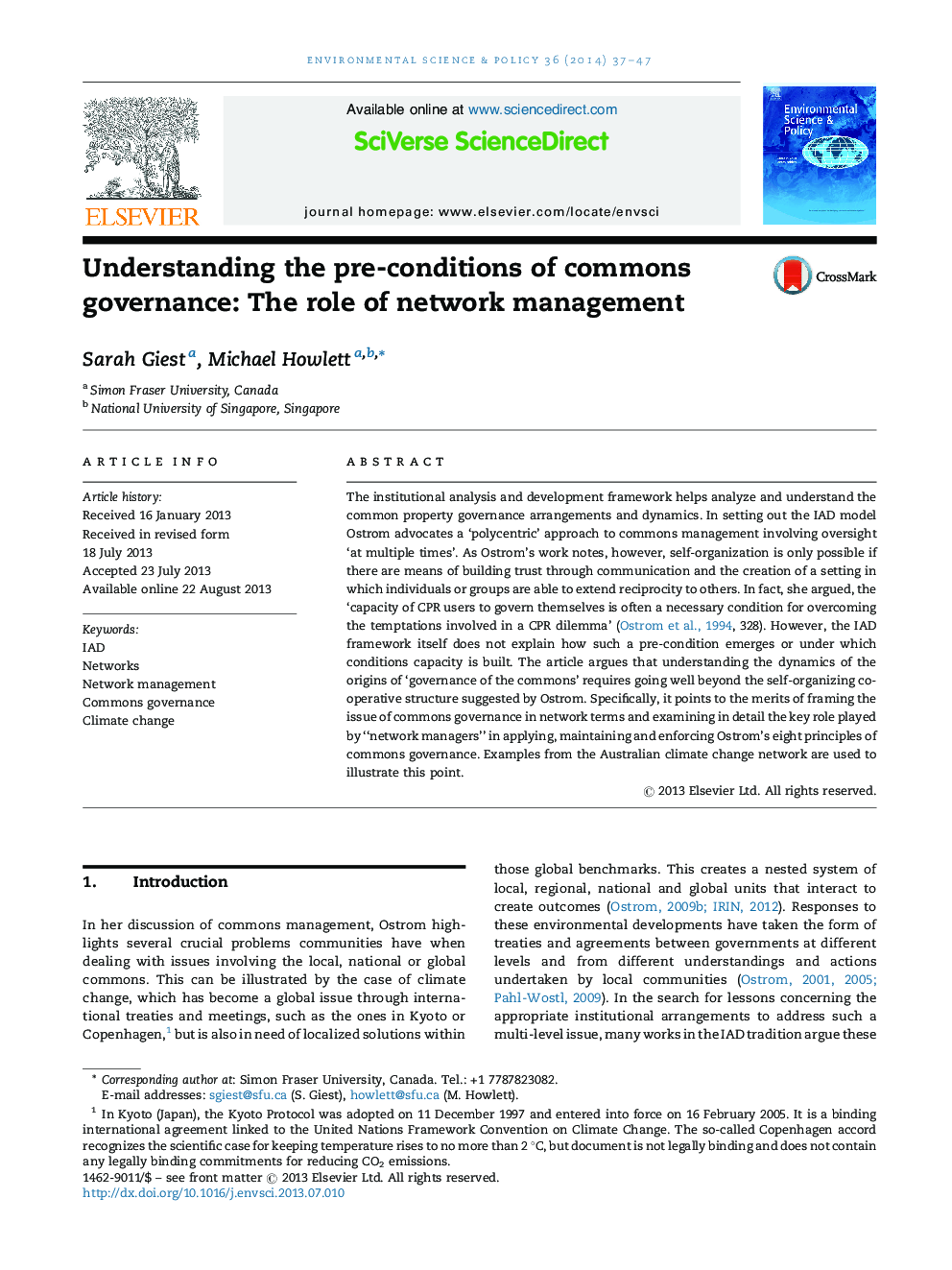| Article ID | Journal | Published Year | Pages | File Type |
|---|---|---|---|---|
| 1053601 | Environmental Science & Policy | 2014 | 11 Pages |
The institutional analysis and development framework helps analyze and understand the common property governance arrangements and dynamics. In setting out the IAD model Ostrom advocates a ‘polycentric’ approach to commons management involving oversight ‘at multiple times’. As Ostrom's work notes, however, self-organization is only possible if there are means of building trust through communication and the creation of a setting in which individuals or groups are able to extend reciprocity to others. In fact, she argued, the ‘capacity of CPR users to govern themselves is often a necessary condition for overcoming the temptations involved in a CPR dilemma’ (Ostrom et al., 1994, 328). However, the IAD framework itself does not explain how such a pre-condition emerges or under which conditions capacity is built. The article argues that understanding the dynamics of the origins of ‘governance of the commons’ requires going well beyond the self-organizing co-operative structure suggested by Ostrom. Specifically, it points to the merits of framing the issue of commons governance in network terms and examining in detail the key role played by “network managers” in applying, maintaining and enforcing Ostrom's eight principles of commons governance. Examples from the Australian climate change network are used to illustrate this point.
